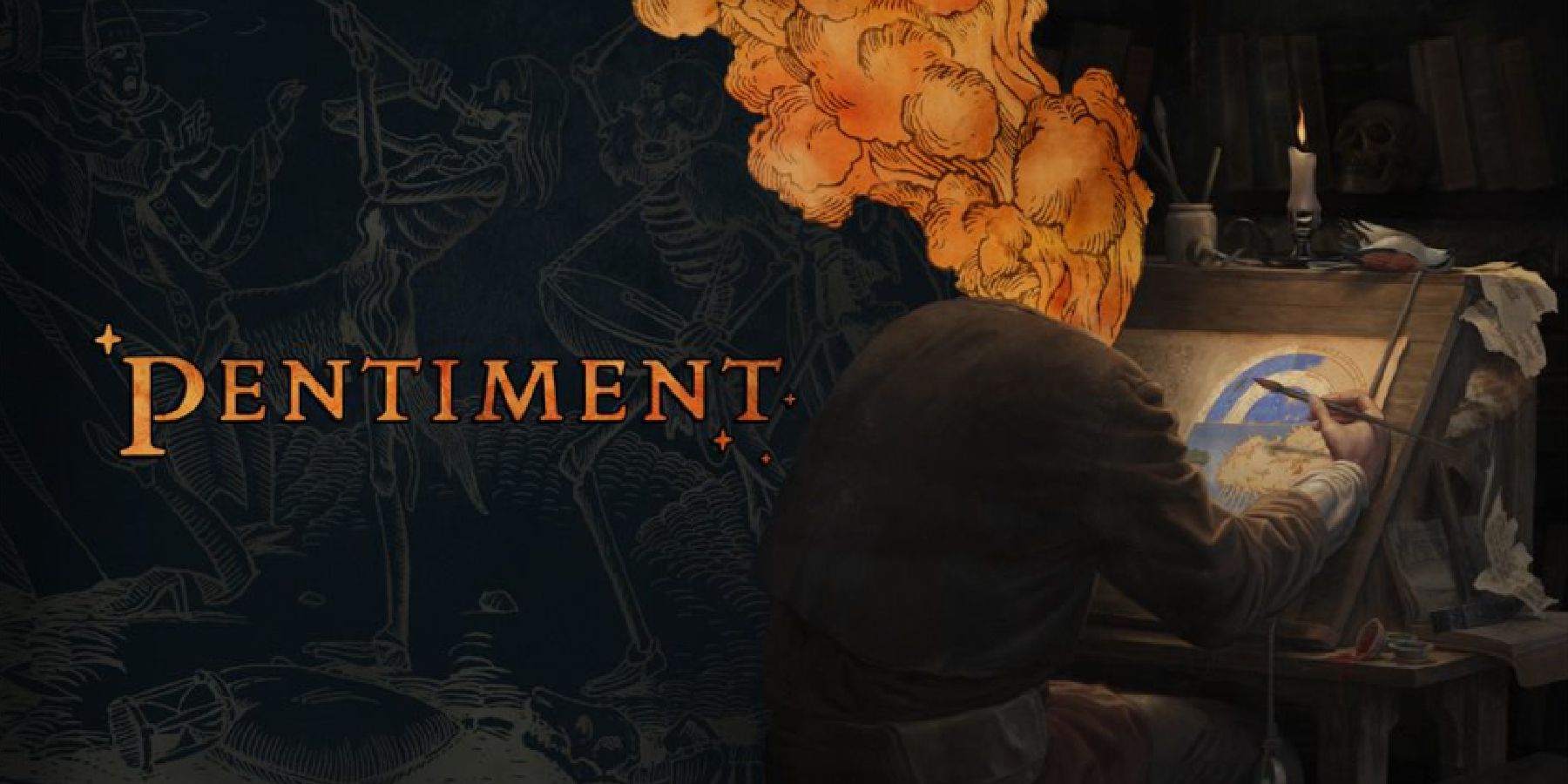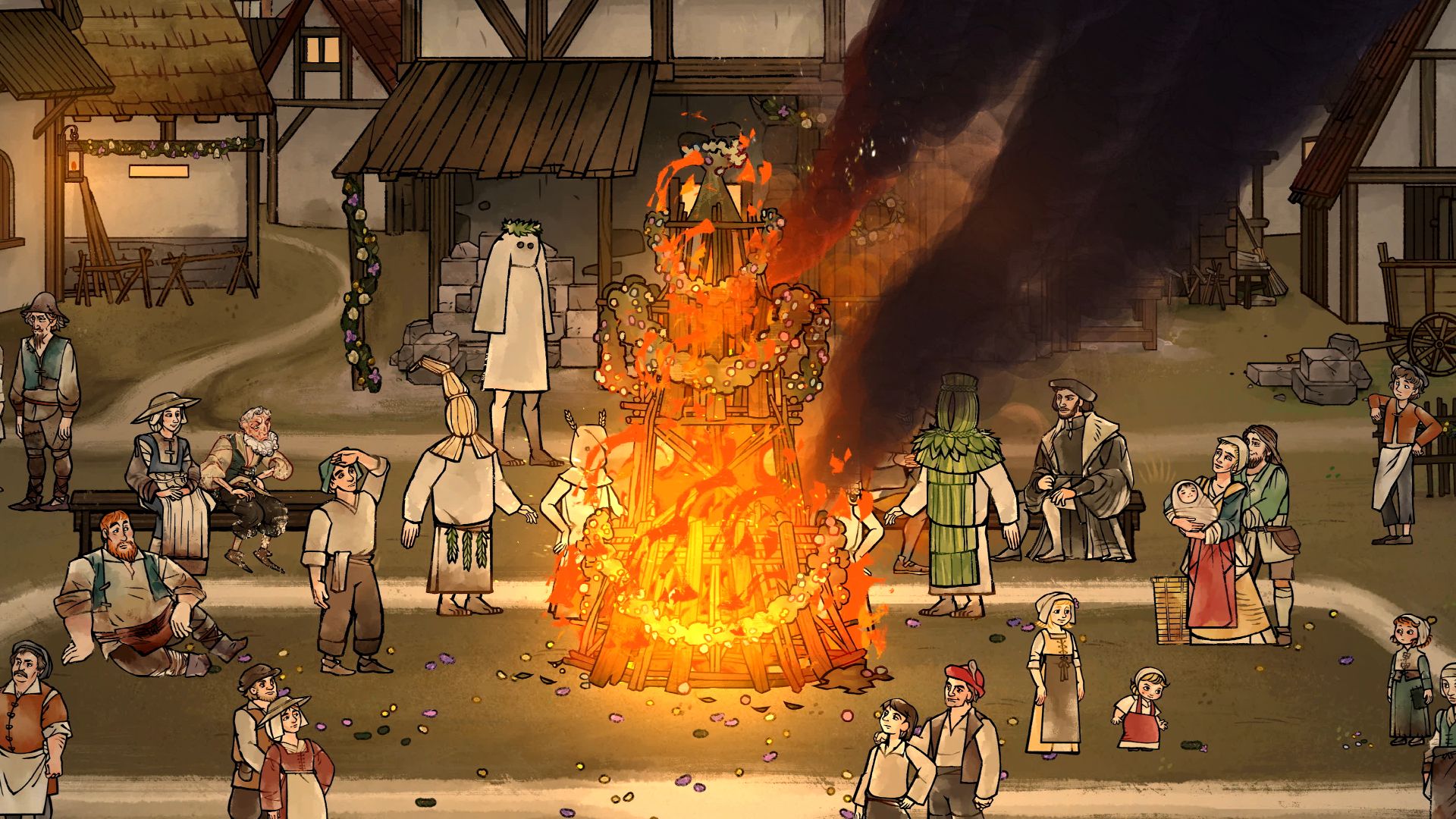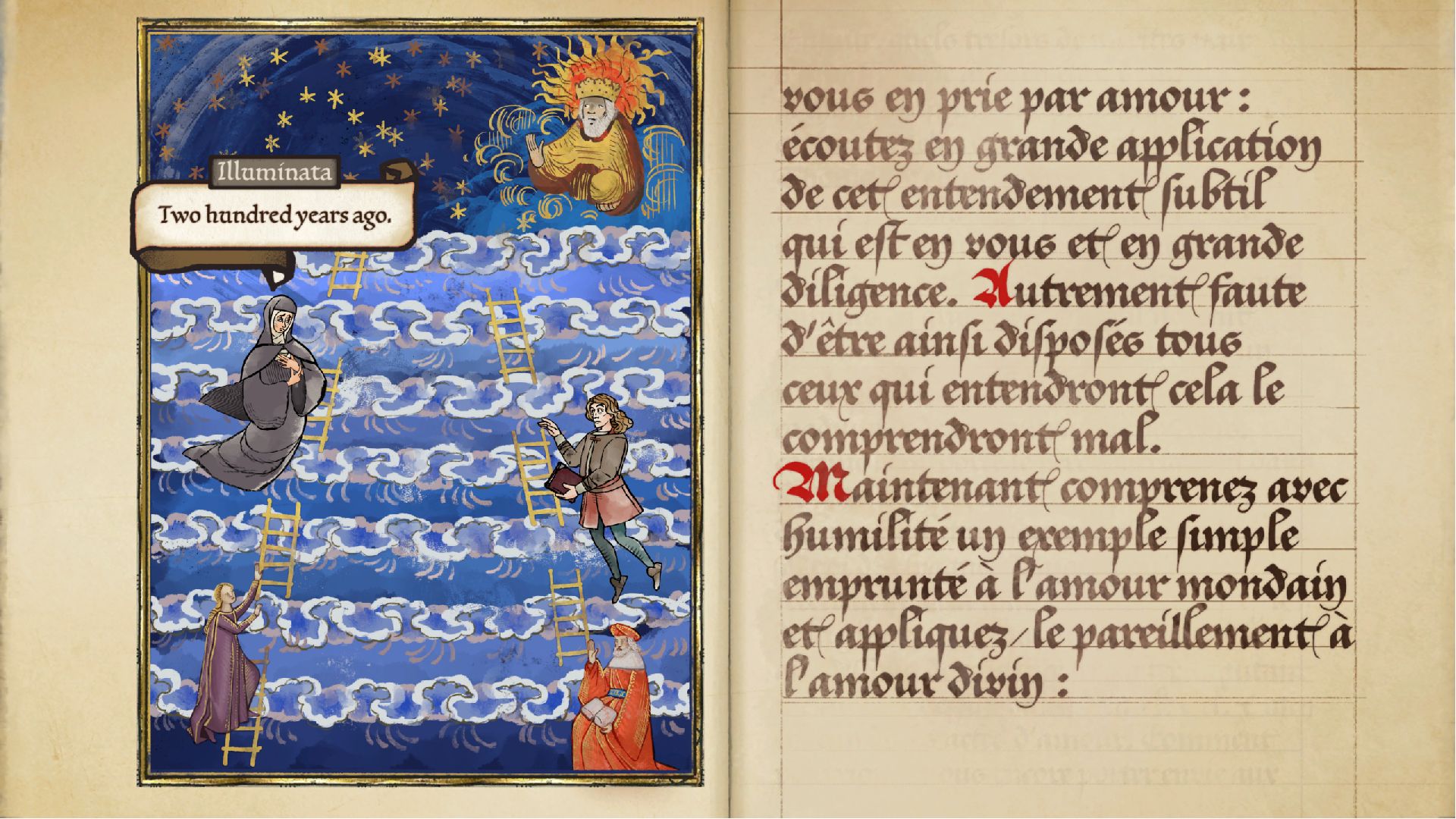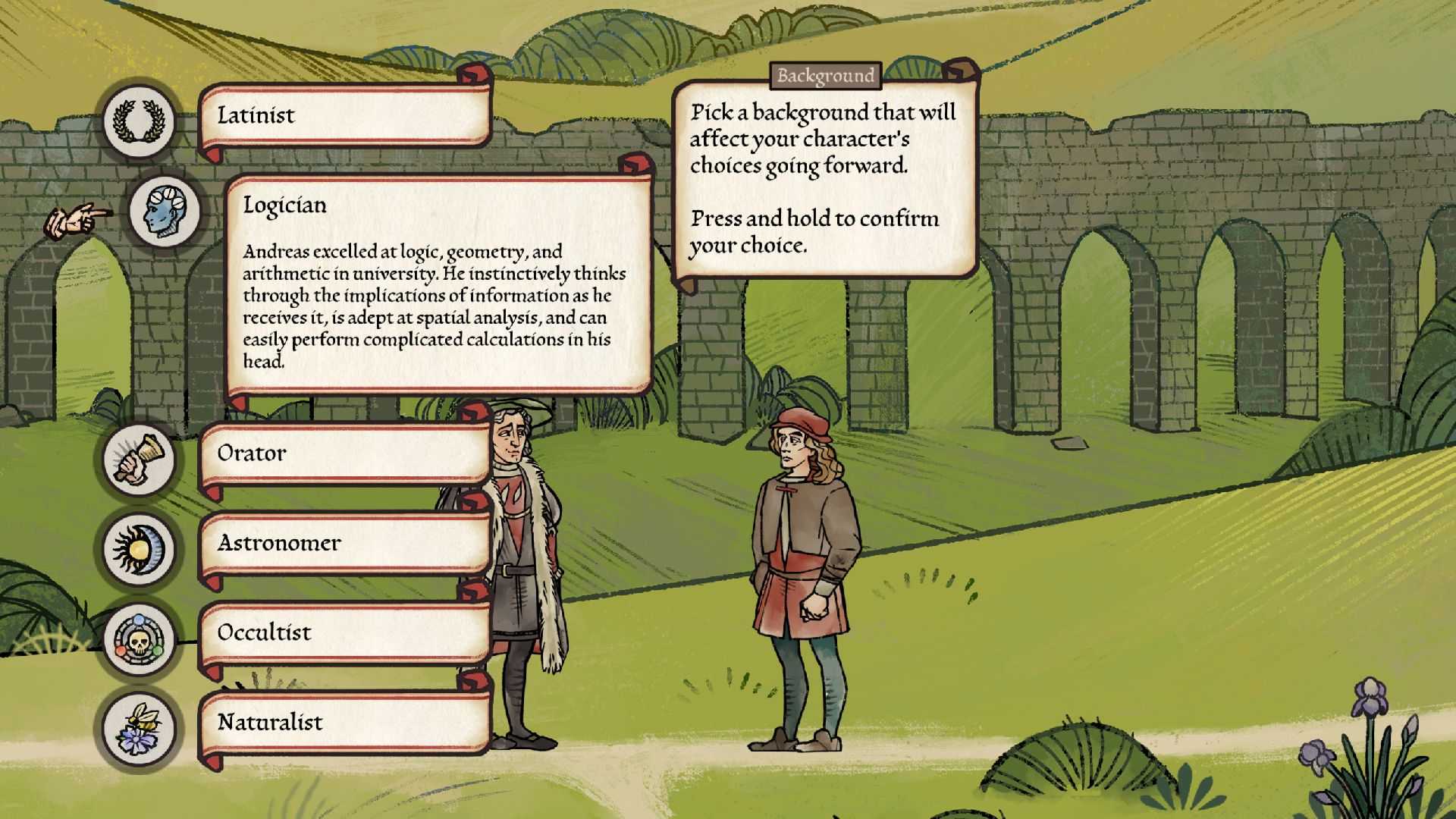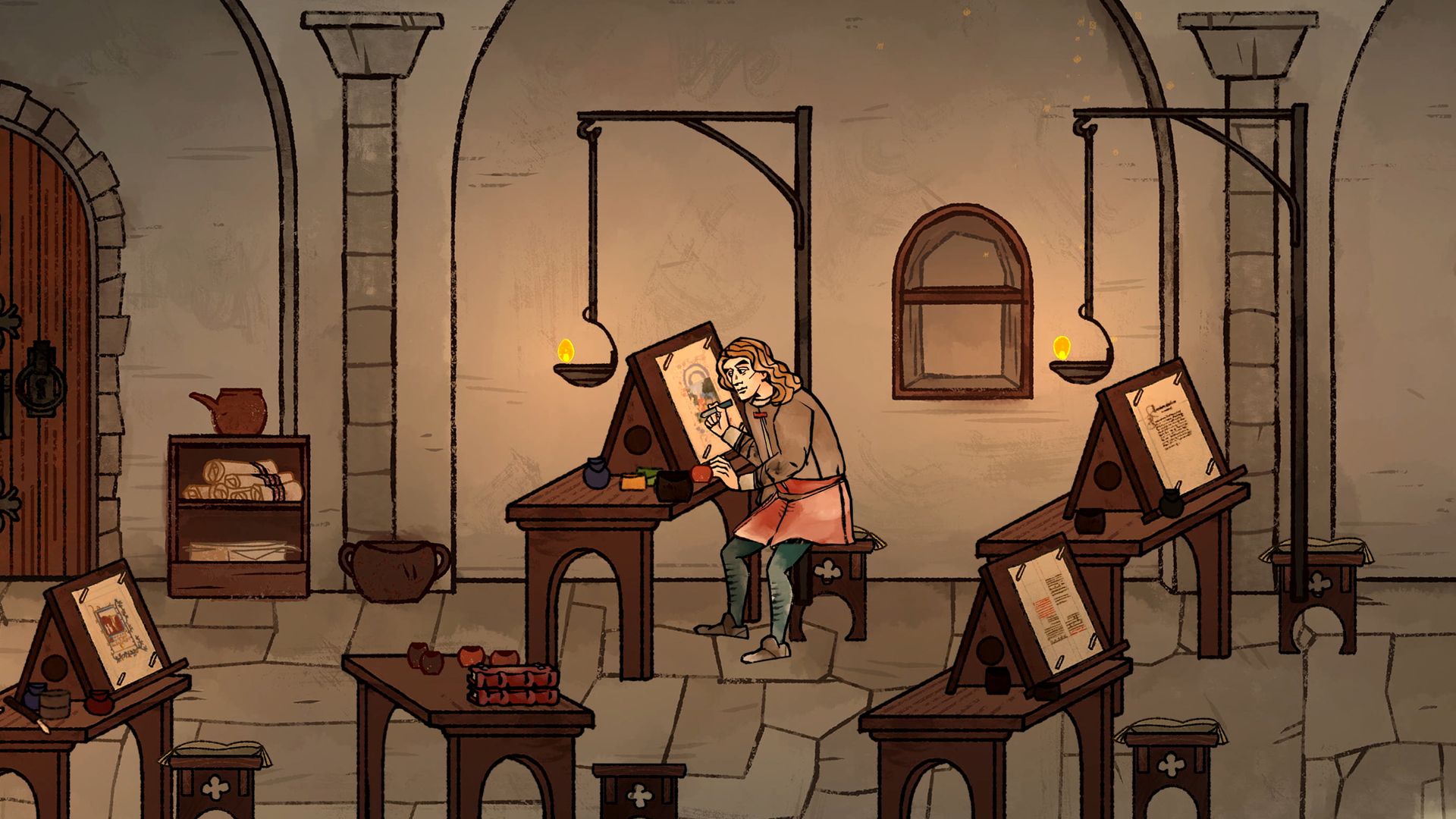When Obsidian Entertainment debuted Pentiment at the Xbox and Bethesda Games Showcase earlier this year, it was a bit of a surprise. Obsidian is best known for its catalog of critically acclaimed RPGs like The Outer Worlds, Pillars of Eternity, and Knights of the Old Republic 2, leaving Pentiment as something of an oddity when looking at the studio’s portfolio. 2D narrative games are certainly uncharted waters for this veteran studio, and this tightly-knit medieval tale is taking Obsidian and its fans out of their comfort zones.
Thanks to its unique art style and ambiguous story that even Obsidian is hesitant to call a murder mystery, Pentiment certainly raises a few eyebrows as it beautifully transitions from scene to scene. It’s undoubtedly a challenging game to pin down and likely was an even more challenging elevator pitch when the team behind it decided to pursue this passion project. In a preview session with Senior Design Director Josh Sawyer and Art Director Hannah Kennedy, Game Rant got the chance to see what Pentiment is all about, and so far, the game shows a lot of promise.
Pentiment was a concept Josh Sawyer held in the back of his mind for a while but never found the right opportunity to pitch. It would be an understatement to say that Obsidian has its hands full right now between Avowed, The Outer Worlds 2, and Grounded all in the pipeline for the next few months to even the next few years. However, a perfect storm of acquisitions and a thriving indie scene would lead to the Design Director's passion project getting the green light. Sawyer says that if it weren’t for Microsoft acquiring Bethesda in 2020, Pentiment would likely have never been made at all.
Sawyer states that trying to find funding for Pentiment ten years ago, or even five years ago, would have been a struggle thanks to the noncommercial nature of a game set inside one of the most overlooked time periods in modern history. But due to the advent of Xbox Game Pass and the thriving market for smaller-scale games, Pentiment seemed like a game that finally made sense to Obsidian. So with a crew of only 13 developers, Sawyer set out to deliver something special, and that team’s dedication and authenticity to the time period regularly came through in this preview build.
Pentiment immediately draws players in with its distinctive and striking art style, evoking artwork of the late medieval period. Illuminated manuscripts and woodcut prints serve as the game’s primary inspirations, and the current artwork looks great in motion. Storybook sequences throughout the game tend to blend the two art styles, occasionally introducing a character in the woodcut style to a character in the illuminated style. The developers have taken every step to make the whole game feel as authentic and alive as possible, thanks to extensive research done by multiple historians, while also giving the artwork a nice modern contour. Pentiment is more or less a moving piece of medieval art.
Pentiment’s attention to detail is staggering, all the way down to the font rendering. Depending on a character's story, upbringing, and other facets of their personality, the game changes their dialogue’s typeface. A character with higher status has a fancy font that is borderline illegible by today’s writing standards; in contrast, a poorer character would have a more scratched and easy-to-read style. A small but very impressive detail is how lines get slashed out as dialogue is written as if the player were reading old manuscripts where the writer would scribble out a mistake. It’s a touch that Obsidian could easily skip, and no one would even think twice about it, but it pulls a lot of weight in making Pentiment feel genuinely authentic to the time period. That attention to detail encapsulates how much Sawyer and his team really care about putting players in medieval Europe.
Concerning Pentiment’s story, Obsidian seems to be saving most of it for when the game launches. As a basic synopsis, players will take on the role of Andreas Maler, a journeyman artist in the late 16th century who arrived at a Bavarian abbey in the aftermath of a murder. Andreas’ close friend has been accused of the high-profile murder, and it is up to Andreas to absolve him. The choices the player makes and the people they implicate will have consequences spanning 25 years throughout an experience that Obsidian says will immerse players in the relationships and characters Andreas encounters.
Obsidian says Pentiment is firmly a narrative adventure all about the “vibes” and player investment in the world, with some role-playing elements added in as players explore. For example, in an early chapter of Pentiment, Andreas can choose where he completed his Wanderjahre (journeyman apprenticeship in a faraway land), and the location players choose dictates what languages Andreas knows and how characters perceive him. From there, decisions get a little more complex.
Unlike many games that allow players to exhaust every dialogue choice at their disposal, Pentiment makes players carefully consider their words. Not every dialogue option is one that can or should be used because the results may vary. Exhausting every choice may lead to some characters thinking Andreas is an annoying person, and that character will carry that thought with them for the rest of the game. Context of conversation matters heavily in Pentiment, and there appears to be a tremendous sense of agency and weight to Andreas's decisions.
If there is one thing that Obsidian has felt the need to drive home with Pentiment, it would be accessibility. Because of the genre, subject matter, and art style, the team wants this game to be as easily digestible as possible. As a result, Pentiment is simple and easy to play, focusing on legibility, playability, and comprehensibility.
Controls are minimal and forgiving; mini-games are designed purely for immersion and getting a feel for the vibe of the late 16th century. Players are free to change the fonts to a more simplified typeface in case the default text is hard to read. Pentiment’s primary goal is to let players take in the setting, the artwork, and the story as comfortably as they can, and lots of thought has clearly been put into every type of gamer that may want to jump into 1518 Bavaria.
Additionally, one of the game’s biggest strengths right now is how it removes obstacles for those who might be intimidated by the setting. Not everyone is a history buff - many often overlook the late 16th century in particular - so there may be a few players eyeing this game with little knowledge of the time period. In response, Obsidian has created an extensive glossary filled with terms that players may not know and also has a list of every character in the story so players can keep track. Players who fear they don’t know enough about the medieval period in Bavaria to enjoy this game will likely not have too much trouble keeping up with what's happening.
What makes Pentiment so exciting is how focused and unique it is already shaping up to be. There hardly exists an easy point of reference for a historical game that looks and plays like this. It isn’t a traditional RPG in the Obsidian style, but it's in those few RPG systems it has where Pentiment sets itself apart from many narrative games like Night in the Woods, a game that Sawyer points to as an inspiration. What is obvious is that Obsidian is trying hard to share its love for the 16th century with players and have them experience a gripping narrative in the process. Through the team’s dedication to authenticity, accessibility, and storytelling, it may just accomplish that goal. In short, Pentiment is looking great.
Pentiment launches November 2022 for PC, Xbox One, and Xbox Series X|S.

